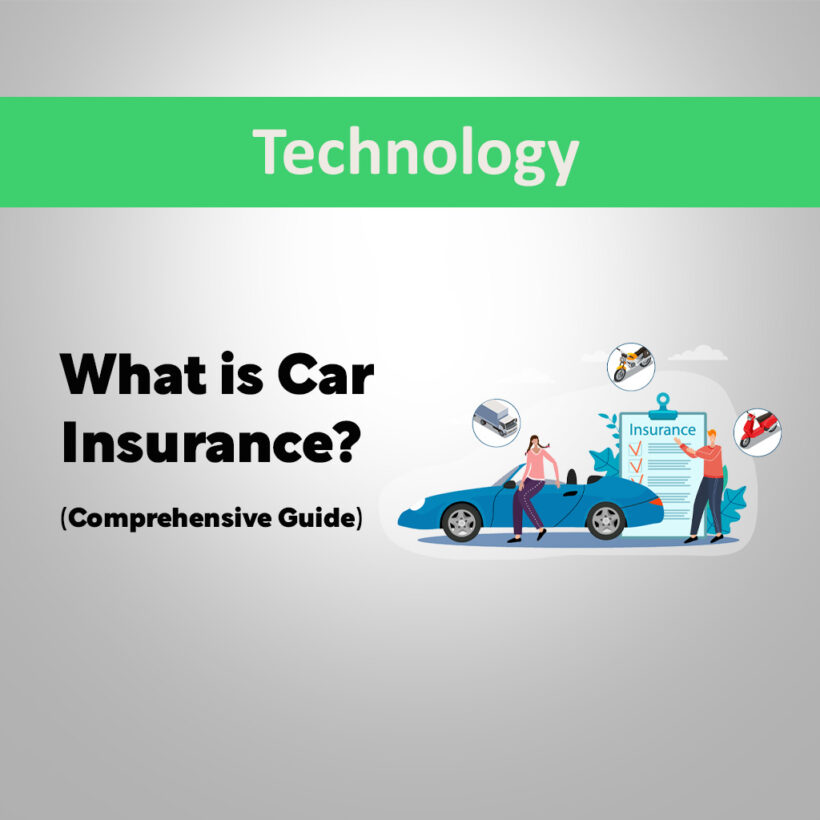Car insurance is a contract between you and an insurance company that protects you financially in case of accidents, theft, or damage to your vehicle. In exchange for paying a premium, the insurer agrees to cover certain costs as defined in your policy.
Types of Car Insurance
- Liability Insurance (Mandatory in most states)
- Covers bodily injury and property damage to others when you’re at fault.
- Does not cover your own vehicle or injuries.
- Comprehensive Insurance
- Covers non-collision incidents such as theft, vandalism, fire, floods, hail, or animal damage.
- Personal Medical Insurance (MedPay or MPC)
- Medical payments coverage provides medical payments for yourself and the passengers in your vehicle, regardless of who is at fault in the accident. MedPay is usually an optional coverage.
Although these are the most common auto insurance policy coverage types, there are numerous others. Some of them are gap insurance, rental reimbursement, accident forgiveness, emergency road assistance, breakdown mechanical insurance and new car replacement. Some of the coverage types are not offered by all companies for all vehicles.
How does Car Insurance Work?
Now that you understand what auto insurance is, you may be curious about how it applies in the real world. Auto insurance shifts the financial risk of driving and owning a vehicle from you to an insurer, who agrees to do so in return for a premium. Paying your premium is a key component of how car insurance operates and prevents a lapse in coverage.
Your insurance representative can guide you to decide on what type of auto insurance and how much coverage is right for you, and after reaching that consensus, you buy your policy by paying the premium. An insurance policy is one founded on good faith agreement that in case you are involved in a covered loss, your insurance company will cover the damages according to your coverage and up to the limits you have.
Occasionally, one kind of coverage will have a deductible. That is the dollar amount you have to pay yourself in order to access that coverage. Claims on liability coverages do not involve a deductible, but collision, comprehensive and uninsured/underinsured motorist coverages will usually have deductibles. For example, a $500 collision deductible implies that the initial $500 of damage to your car is your fault if you cause an accident. The remaining damage is normally paid by your insurance provider (up to the ACV of your car). It’s a common practice for your insurance company to subtract the deductible from your claim payment amount.
How to Choose the Right Policy?
- Assess Your Needs:
- Older car? Skip collision/comprehensive.
- Long commute? Prioritize UM/UIM and PIP.
- Compare Quotes: Use tools like NerdWallet or Progressive to check 3+ insurers.
- Check Insurer Reputation: Look up claims satisfaction scores (J.D. Power or AM Best).
- Review Annually: Life changes (marriage, new job) can lower rates.
Saving Money on Car Insurance
- Raise Your Deductible: Going from $250 → $1,000 can slash premiums by 25%.
- Drop Unnecessary Coverage: If your car’s worth <$3k, skip collision.
- Pay Annually: Avoid monthly service fees.
- Usage-Based Insurance: Programs like Allstate DriveSafe® reward safe driving.
How much does Car Insurance cost?
Knowing how auto insurance rates work will help you save money on your premiums. The typical price for auto insurance in America is $2,545 annually for full coverage, but prices do fluctuate wildly, based on where you live. For instance, although drivers in Florida pay the highest amount, on average, for full coverage automobile insurance at $3,950 annually, Vermont has the lowest price for full coverage at $1,359 annually.
Other factors that contribute to your car insurance rate include where you live, driving history, claims experience and type of vehicle. Age, gender and credit-based insurance scores are also taken into account in most states. To ensure you receive the proper coverage at the best price, begin your search by gathering several quotes from top auto insurance companies to determine which company can provide you with the best rate for your circumstances.
With so many factors that go into your rate, you cannot possibly compare your rate to your friends’ or your family members’. You and your friend are probably living in the same district and driving a similar car, but you can have extremely different rates due to other factors.
FAQs:
Q1: Is the minimum required liability coverage enough?
A. It meets legal standards, but may not fully protect your assets. Consider higher limits for peace of mind.
Q2. Do I need Car Insurance before buying a vehicle?
A. Though you won’t need an active policy when purchasing a vehicle, you may have to provide proof of insurance in order to finalize the purchase and drive your new car away. Because purchasing a new vehicle is often a day-long experience, some individuals like to get their policy up and running on the same day they take delivery of the vehicle. If you have an existing policy, the coverage you have now may extend temporarily to the new vehicle, but it can be with a bit of risk, as it’s only for the coverage you have on the old car. And the extension of the coverage is typically only for 30 days. That’s why most insurance experts advise you to add the new vehicle to your existing policy, or complete your new policy on the day you buy your car.
Q3. Does Insurance cover natural disasters?
A. Only if you have comprehensive coverage (e.g., floods, hail).


